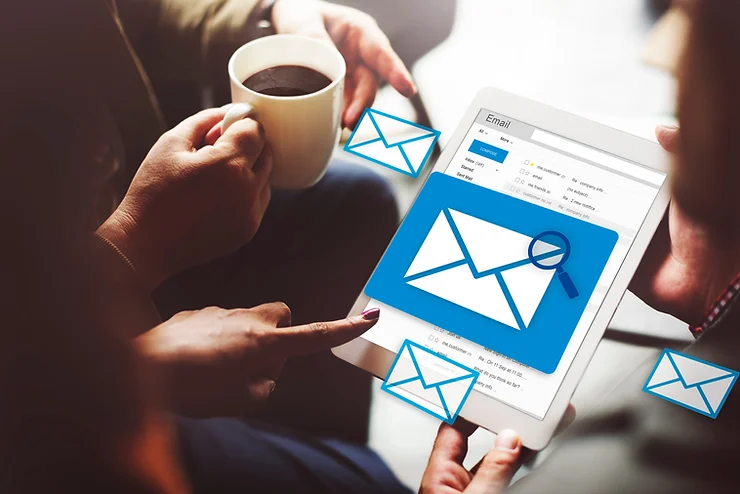Email marketing is one of the most powerful tools in a marketer’s arsenal. When done right, it can be highly effective in reaching your target audience, building brand loyalty, and driving sales. However, email marketing is not just about sending emails; it’s about sending the right emails to the right people at the right time. We’ll explore some email marketing best practices to help you supercharge your campaigns and achieve better results.
1. Build a High-Quality Email List
Your email list is the foundation of your email marketing campaigns. It’s essential to have a list of engaged and interested subscribers. Here are some tips to build a high-quality email list:
- Use Double Opt-In: Implement a double opt-in process where subscribers confirm their subscription. This ensures that your list consists of genuinely interested individuals.
- Segment Your List: Divide your list into segments based on various criteria such as demographics, behavior, and preferences. This allows you to send more personalized and relevant content.
- Clean Your List: Regularly remove inactive or bouncing email addresses to maintain list quality and deliverability.
- Provide Value: Offer incentives like discounts, free resources, or exclusive content to encourage people to subscribe.
2. Craft Compelling Subject Lines
Your email’s subject line is the first thing recipients see, and it can significantly impact open rates. A compelling subject line should be:
- Concise: Keep it short and to the point; most experts recommend 50 characters or less.
- Clear: Let the recipient know what the email is about.
- Engaging: Create curiosity or offer a benefit to entice readers.
- Personalized: Include the recipient’s name or other personalized elements whenever possible.
3. Create Valuable Content
The content of your emails is where you truly engage your subscribers. To create valuable content, consider the following:
- Relevance: Ensure that your content is relevant to the recipient’s interests, needs, and stage in the buyer’s journey.
- Quality: Write well-crafted, error-free content that provides real value. Don’t overlook the importance of good design and mobile optimization.
- Clear Call to Action (CTA): Every email should have a clear and compelling CTA. Whether it’s to make a purchase, read a blog post, or share on social media, make the desired action evident.
4. Test and Optimize
Email marketing is not a static strategy; it’s a dynamic one that requires continuous improvement. Testing and optimization are essential for achieving the best results. Consider:
- A/B Testing: Experiment with different elements of your emails, such as subject lines, CTAs, and content to see what resonates best with your audience.
- Analyze Metrics: Pay attention to key metrics like open rates, click-through rates, conversion rates, and unsubscribe rates. Use these insights to refine your email strategy.
- Segmentation: Continuously update your segments based on subscriber behavior and preferences. This ensures that you’re sending the most relevant content.
5. Respect Subscribers’ Preferences
Respecting your subscribers’ preferences is crucial for maintaining a positive relationship. Allow subscribers to:
- Choose Email Frequency: Offer options for how often they want to receive emails.
- Opt-Out Easily: Make it simple for subscribers to unsubscribe if they no longer want to receive your emails.
- Update Preferences: Allow subscribers to manage their preferences and update their information.

6. Personalize Your Emails
Personalization is a powerful way to connect with your audience and make them feel valued. Use data to create personalized experiences by:
- Using Recipient’s Name: Address subscribers by their first name to add a personal touch.
- Product Recommendations: Suggest products or services based on the recipient’s past purchases or browsing behavior.
- Behavioral Triggers: Send emails triggered by specific actions, like abandoned cart reminders or post-purchase follow-ups.
- Location-Based Content: Tailor content to the recipient’s location or time zone.
7. Mobile Optimization
With the majority of emails now being opened on mobile devices, it’s crucial to ensure that your emails are mobile-friendly. Here’s how:
- Responsive Design: Use responsive email templates that adapt to different screen sizes.
- Optimize Images: Compress images to reduce load times on mobile devices.
- Clear CTA Buttons: Make sure your CTA buttons are easy to tap on a touchscreen.
- Single Column Layout: Use a single-column layout for better readability on mobile screens.
8. Monitor and Improve Deliverability
High deliverability rates are essential for the success of your email marketing campaigns. To enhance deliverability:
- Authenticate Your Domain: Set up DKIM and SPF records to verify the authenticity of your emails.
- Clean Your List: Regularly remove invalid or inactive email addresses to maintain a healthy sender reputation.
- Avoid Spam Triggers: Be cautious with spammy elements like excessive capitalization, misleading subject lines, and too many images.
- Use a Reliable Email Service Provider (ESP): Choose an ESP with a good reputation for deliverability.
9. Compliance with Regulations
Ensure that your email marketing practices comply with relevant regulations, such as the CAN-SPAM Act in the United States or the General Data Protection Regulation (GDPR) in the European Union. This includes:
- Providing an Unsubscribe Option: Every email must include a clear and easy way for subscribers to opt out of future emails.
- Honest Sender Information: Accurately identify yourself as the sender, and include a physical mailing address.
- Permission-Based Marketing: Only send emails to individuals who have given their explicit consent to receive them.

10. Monitor Your Competition
Stay informed about what your competitors are doing in the email marketing space. This can provide valuable insights into emerging trends and help you differentiate your campaigns. Pay attention to:
- Frequency and Timing: How often are they sending emails, and at what times?
- Content and Design: What type of content and design elements do they use in their emails?
- Engagement Metrics: Analyze how their subscribers are engaging with their emails.
- Segmentation Strategies: See if you can identify how they segment their email lists.
11. Build Trust and Brand Consistency
Trust is vital in email marketing. To build trust with your subscribers:
- Consistent Branding: Ensure that your emails reflect your brand’s style, colors, and tone of voice.
- Provide Value: Continuously deliver valuable content and offers that meet your subscribers’ needs.
- Transparency: Be transparent about how you use subscriber data and what subscribers can expect from your emails.
- Customer Support: Make it easy for subscribers to contact your customer support team.
12. Stay Informed and Adapt
Email marketing is an ever-evolving field. Keep up with industry trends, best practices, and changes in email client technology. Subscribe to industry newsletters and blogs, attend webinars, and participate in forums and discussions to stay informed.
Subscribe to Industry Newsletters and Blogs
Joining mailing lists and following reputable blogs in the email marketing sphere will provide you with a steady stream of insights and updates. These resources often share the latest trends, case studies, and practical tips from experts. Industry newsletters like “Email Marketing Daily” and blogs such as “Email Marketing Excellence” can be goldmines of information.
Attend Webinars and Workshops
Webinars and online workshops hosted by leading experts and organizations are excellent opportunities to expand your understanding of emerging email marketing techniques. These events often offer a deep dive into specific topics, and you can interact directly with presenters to get answers to your questions. Don’t miss out on events like “Mastering Email Automation” or “Effective Email Copywriting.”
Participate in Forums and Discussions
Engaging with peers and professionals in email marketing forums and online communities can provide valuable insights and foster knowledge-sharing. Platforms like Reddit’s r/EmailMarketing, LinkedIn groups, and marketing forums such as Warrior Forum are excellent places to pose questions, share your experiences, and learn from others in the field.
Online Courses and Certifications
Consider enrolling in online courses and earning certifications in email marketing. Platforms like Coursera, HubSpot Academy, and LinkedIn Learning offer courses that cover various aspects of email marketing, from fundamentals to advanced strategies. Certifications not only enhance your knowledge but also demonstrate your expertise to potential employers or clients.
Conferences and Industry Events
Attending in-person or virtual conferences and industry events, such as the Email Marketing Summit or the Digital Marketing Expo, can be an eye-opening experience. These events often feature thought leaders, workshops, and networking opportunities that can provide a deeper understanding of the current email marketing landscape.

Networking
Building and nurturing professional relationships within the email marketing community can be invaluable. Attend local marketing meetups or join online groups where you can connect with fellow marketers, share experiences, and gain insights from their successes and challenges.
Experiment and Innovate
While learning from others is essential, don’t forget to innovate and test your ideas. Email marketing is both an art and a science, and there’s always room for creativity and experimentation. A/B testing, analyzing your campaign data, and trying new approaches can lead to breakthroughs in your strategies.
As the digital marketing landscape continues to evolve, staying informed and adapting to new trends and technologies will keep your email marketing campaigns fresh and effective. The email marketing field rewards those who are willing to learn, experiment, and embrace change, making it an exciting and dynamic realm for marketers looking to excel.
Take Your Email Marketing to the Next Level
Email marketing remains a potent tool in the digital marketing landscape. By following these best practices, you can supercharge your email marketing campaigns, foster stronger relationships with your subscribers, and achieve better results. Remember that the key to success lies in delivering value, personalization, and respect for your audience’s preferences. Continuously test, optimize, and adapt to ensure your email marketing remains effective and relevant in an ever-changing digital landscape.
Check out our BrandRep blog to learn more about professional digital marketing, SEO, and social media services to improve your visibility online.













